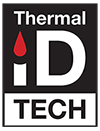May 20th 2025
The Critical Role of Horticultural Plant Tags in Nurseries and Botany Labs
In the dynamic and detail-intensive environments of plant nurseries and botany laboratories, horticultural plant tags serve as more than just labels — they are essential tools that uphold the integrity, efficiency, and scientific accuracy of plant cultivation and research. Whether managing thousands of plant varieties in a commercial nursery or conducting genetic trials in a biotechnology lab, plant tags play a pivotal role in traceability, organization, and operational success.
1. Accurate Identification and Classification
In both nurseries and research settings, plant misidentification can lead to costly errors. Plant tags help eliminate confusion by providing immediate, visible information including:
- Species and cultivar name
- Propagation date
- Batch or lot number
- Treatment or condition applied (e.g., fertilization, irrigation schedule, genetic modification)
This level of clarity is especially vital when working with similar-looking plants or genetically modified organisms, where subtle differences carry major implications.
2. Essential for Research Validity in Labs
In a biotech or botany laboratory, precision is everything. Horticultural tags:
- Ensure each sample is traceable throughout the experiment cycle
- Help maintain proper controls and variable differentiation
- Are crucial for compliance in regulated environments (e.g., FDA, USDA, EPA for GMO trials)
Tags often work in conjunction with databases, barcodes, or RFID systems to maintain a verifiable chain of data from seeding to final report.
3. Improved Operational Efficiency
In nurseries handling thousands of plants, plant tags reduce labor costs and boost productivity by:
- Minimizing manual identification errors
- Enabling faster sorting, categorization, and relocation
- Allowing seasonal or rotational staff to quickly understand plant specifics
Color-coded or QR-based tags can also assist in workflow segmentation (e.g., watering schedules, pesticide applications, or readiness for sale).
4. Enhanced Customer Communication
For retail nurseries or garden centers, tags double as a customer education and sales tool. A well-designed plant tag can include:
- Care instructions (light, watering, pruning)
- Plant characteristics (bloom time, mature size, soil preference)
- Branding and pricing
This improves customer satisfaction and reduces return rates due to misuse or misunderstandings.
5. Long-Term Recordkeeping and Compliance
In both research and commercial environments, regulatory or scientific documentation may require proof of traceability and process controls. Plant tags:
- Support long-term data retention by associating each plant with its lifecycle history
- Help meet inspection standards for agricultural, biotech, or export requirements
- Provide documentation trails for audits or peer-reviewed research
? 6. Customization and Durability
Modern horticultural tags are highly customizable — made to withstand UV exposure, water, soil contact, and chemicals. Durable materials like polypropylene or weather-resistant plastics ensure that the information remains legible and intact through the growing cycle.
Conclusion
From accelerating workflow in high-volume nurseries to safeguarding scientific accuracy in biotechnology labs, horticultural plant tags are an indispensable investment. As the horticulture and biotech industries grow more data-driven and compliance-focused, the use of accurate, durable, and well-integrated plant tagging systems becomes not just helpful — but essential.
For nurseries and labs aiming for professionalism, traceability, and operational excellence, plant tags are more than just labels — they are the backbone of successful plant management.

